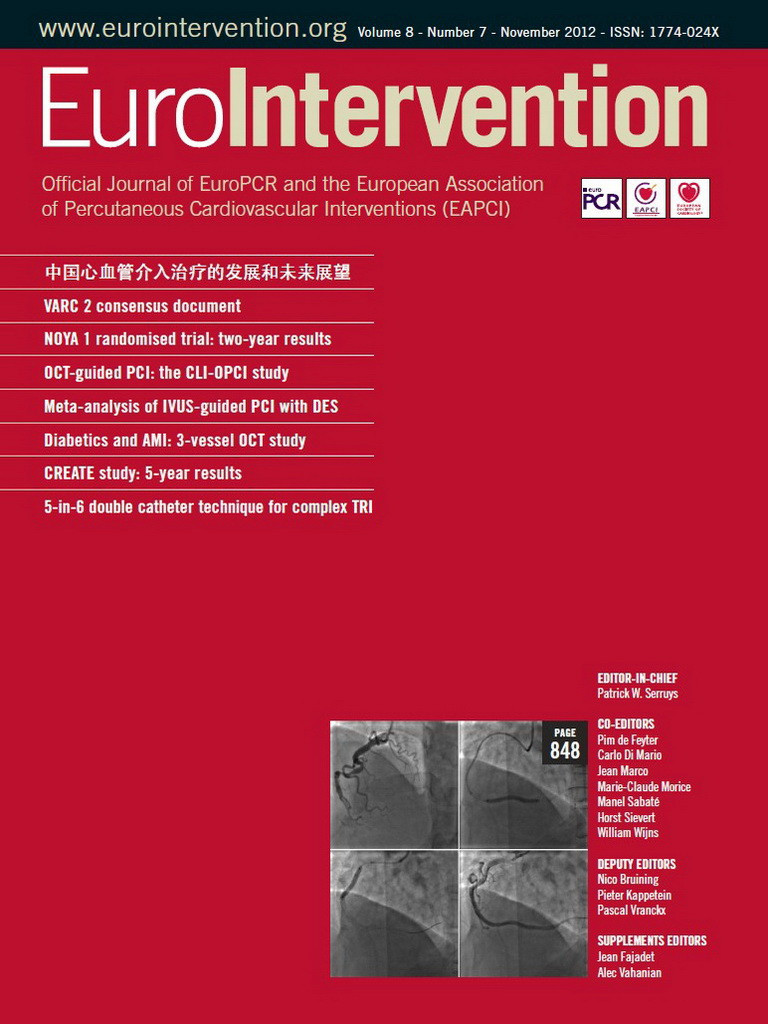Last year, at the 2011 annual meeting of China Interventional Therapeutics (CIT) in Beijing, the world of interventional cardiology celebrated the 10th anniversary of this increasingly important international meeting. I have had the exceptional privilege of being invited to this meeting since its inception, and am witness to this last decade and the extraordinary progress that this anniversary represents for the practice of interventional cardiology in China.
When we look back to the beginning of the 21st century, we see the sudden opening and fast emergence of China as one of the great worldwide leaders in science, economy, technology and politics. As the reputation of China has grown in all these fields, it is fascinating to see from the point of view of interventionalists where these developments have led and what their impact is on our speciality today.
Ten years ago, in the lab at Fuwai Cardiovascular Hospital, Beijing, we began with angiography and conventional stenting. This was improved the year after with echo-intravascular imaging, followed the year after that by virtual histology, followed by complex main stem with pressure wire plus provisional stenting and with each year, many new treatments. During this same period of technical expansion, if my memory is correct, the number of patients increased dramatically from around 300 in 2001 to over 12,000 today. When I look back at these developments, and see what we –and our Chinese colleagues– have attained, you will understand why I now feel almost superfluous as I continue to perform live cases for my so-called pupils, pupils who today –in terms of their experience and mastery– have become my teachers; practitioners who today are pioneering techniques rather than simply adopting or following them.
Scientifically speaking we saw the emergence of an entire technological framework which began as China tried to catch up to the international standards in interventional cardiology. At first, they sometimes mimicked the established technologies we were using here in Europe for which I have no hard feelings believing that it is entirely justified on ethical grounds in order to quickly produce safe and efficient devices capitalising on previous progress made elsewhere. But make no mistake as to where China stands today! I believe that this initial phase has come to an end, and very soon we will see the emergence of original technology fully generated by Chinese scientists and inventors.
In terms of scientific literature, I discovered through translations that important and original findings in interventional cardiology have been ignored, and that these should clearly be brought to light and integrated into the mainstream of the worldwide scientific landscape. If I was able to discover this wealth of scientific literature available in our field coming from China it was in no small part due to the work of one individual, a leader who has played an instrumental role, not only in the development of interventional cardiology in his country, but also in revealing this vast resource to the outside world…that individual is Professor Runlin Gao.
Following two profound discussions with him over the last few months, we constructed the foundation for a new project to attract Chinese papers to EuroIntervention. This project has the ambition of spotlighting the enormous wealth and diversity of research and knowledge coming out of China today. This month, to launch our project, we have chosen to publish in the current edition of EuroIntervention a series of articles originating exclusively from China alongside our usual array of important articles from Europe and other parts of the world.
This is a beginning. A beginning of working as equals with our Chinese colleagues who today challenge us by the quality of their research, by the originality of their thinking and by their excellence. We trust that their special perspective will help improve our understanding of interventional cardiology and advance our profession and are pleased to welcome them to EuroIntervention. We are sure you will find this stimulating.

